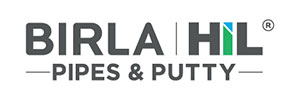Sequencing Batch Reactor Based STP
Overview of Sequencing Batch Reactor Based STP
Sequencing Batch Reactor (SBR) is an advanced technology that uses a fill and draws activated sludge system for wastewater treatment. It is best for treating both industrial and municipal wastes. The main difference between SBR technology and other STP technologies is that SBR uses a single batch reactor/single tank to process the equalization, aeration, and clarification compared to other technologies that use different batch reactors for various processes.
SBR technology is considered to be one of the highest performed solutions for wastewater treatment.

Frequently Asked Questions
The basic process for an SBR system is a biological reaction. The live sludge sinks to the bottom of the tank while the clarifier removes the waste sludge. After the biological reaction, the clarifier draws clear effluent from the top of the reactor. The entire process is done in one unit called a reactor. An SBR reactor is a very efficient way to treat wastewater.
The SBR process was developed in the 1950s by Pasveer and co-workers. They incorporated continuously fed-batch treatment principles and developed a variable volume-activated sludge process. Further development and refinement took place in the United States and Australia. The technology was first widely applied in 1986 with EPA grant aid and EPA SBR Design Manuals published in 1992. SBR treatment technology has improved considerably throughout the years and now offers reliable microprocessor control systems and aeration equipment.
The SBR design involves a single tank for multiple aspects of wastewater treatment. Its main advantage is its high efficiency, it requires very little energy, and it is also cost-effective. The CASS(tm) SBR facility in Canada processes up to 500,000 m3/d and has a footprint of only 6,000 m2. By comparison, the conventional activated sludge system would require a much larger footprint with more levels.
How is SBR technology used in STPs? The SBR process is a patented technology that uses microbial action to reduce nitrate levels in wastewater. The process involves adding fresh wastewater to the reactor and then reacting it. The live sludge settles at the bottom of the tank while the solids settle at the top. As the wastewater is treated, the remaining fraction is removed as effluent, and the rest is reused.
The SBR process has several benefits. First, it can be highly automated, which reduces capital costs. It can also achieve high effluent quality in a short amount of time. Secondly, it can be easily implemented in STPs with limited space, and lastly, it can help reduce energy consumption. The SBR process has a number of other advantages as well.
The second benefit of SBR is its flexibility. It can accommodate a variety of conditions, making it ideal for new plants and upgrading old STPs. With its high efficiency, the SBR process is cost-efficient and environmentally friendly. The main disadvantage of SBR technology is its limited space and inflexibility. However, this does not mean that it cannot be used in existing plants, and it is also suitable for replacing old STPs.
One of the latest concepts in STPs is the sequencing batch reactor (SBR), which cycles between anaerobic and aerobic conditions. This is an ideal solution for a large-scale sewage treatment plant that handles flow rates of more than a million m3/d. The SBR process effectively removes P from a wastewater stream while retaining the quality of the water.
An SBR technology-based STP uses a single tank to treat wastewater. The biological reaction occurs in two stages in a carefully timed sequence, and aeration helps the reaction proceed, and the microorganisms help the process along. Once the biological reaction has taken place, clarification takes place in the same tank. An SBR plant can be designed to operate continuously for decades.
The first phase of an STP based on SBR involves the filling phase, in which the SBR filter feeds free rejects from a buffer tank or SBR system. The process runs in batches, and the Hw tank reaches its maximum filling level. After the filtration process, the residual wastewater is discharged to a discharge or treatment facility.
SBR has a higher turbidity level and is more costly than MBBR, and MBR is also more efficient. SBR has a larger sludge retention time and is slower, and it requires more operator time, but its low turbidity results in a more sustainable system for the environment. Both systems are highly effective at treating wastewater and are suitable for reuse or disposal.
SBR has a smaller membrane opening than MBBR. Both systems treat wastewater and reduce turbidity, and the SBR system does not achieve this high turbidity level. The MBR has a lower turbidity level, but it is still less effective than SBR for treating wastewater. The SBR system can only achieve a 3-log dismissal of bacteria and three-logs of dismissal with an open pore.
There are several advantages of MBBR over SBR, and it will be important to understand the differences between them. MBBR requires less space and is more efficient at treating wastewater than a conventional activated sludge. SBR has two basic stages. The first stage is aeration, which sludges the wastes in a tank. The second step is decanting, which involves pumping the sludge into a basin.
The main advantage of SBR is its high degree of process flexibility. The process includes five discrete time periods, Fill, React, Settle, and Draw. Its advanced design allows additional adjustments to the SBR process, such as the sludge age, dissolved oxygen profile during aeration, and operating mixed liquor solids concentration. The SBR process can also be adapted to any wastewater treatment facility’s specific needs.
The main benefit of SBR technology is that it requires minimal space. The entire treatment process takes place in a single tank. The process uses a batch system, which means that the number of batches is relatively small. SBRs do not require much space. The entire process is automatic, which minimizes the need for mechanical and manual resources. This makes it easy to implement in small or mid-sized treatment plants.
The SBR process is highly flexible. The SBR cycle format can be altered to match the changing process conditions, influent characteristics, or effluent objectives. The Hydroflux SBR process is fully automated, resulting in the lowest operating costs. SBR is also flexible and can be installed in a short amount of time. Hence, it is one of the most cost-effective systems on the market. The SBR method has a long list of advantages.
Client testimonials
Our Clients
















